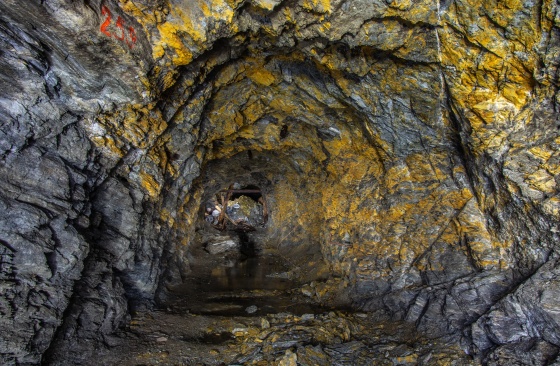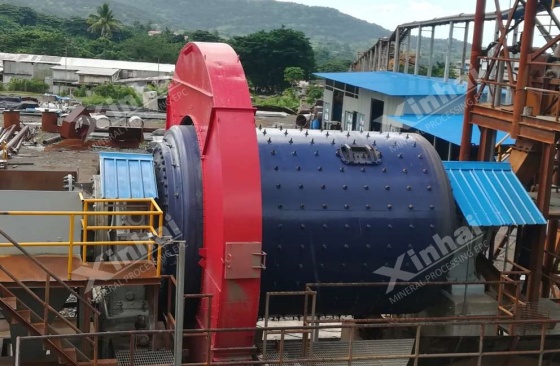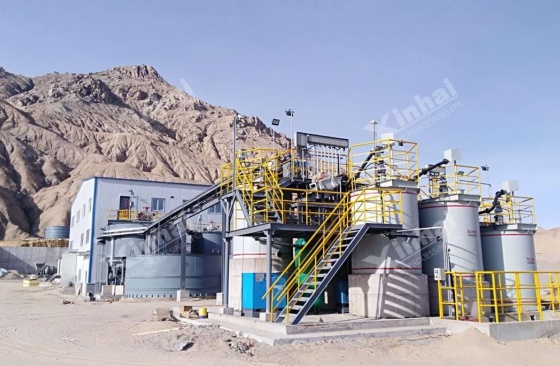
Gold is not only a globally recognized form of hard currency but also a key focus in mining exploration and extraction. Among the various types of gold deposits, Placer Gold(alluvial gold) and Lode Gold are the most common, representing secondary enrichment and primary accumulation in geological evolution, respectively.

Placer gold is typically found in riverbeds or ancient alluvial deposits and is relatively easy to extract using simple methods. In contrast, lode gold is embedded in hard rock formations and requires more complex techniques such as drilling and blasting.
So, what is the difference between placer gold and lode gold? And how can mining operations select the right processing method and equipment based on orebody characteristics?
In this article, we’ll walk you through the fundamental differences between placer gold and lode gold—covering their geological features, mining processes, and economic implications. Whether you're evaluating a new gold project or exploring mineral processing strategies, this guide will help you better assess project feasibility and make more informed technical and investment decisions. If you're involved in mining planning or simply interested in the world of gold extraction, keep reading!
1. What is the meaning of placer gold?
Placer gold refers to secondary gold deposits that have been re-deposited on or near the Earth’s surface after weathering, transportation by water, and natural sorting from primary gold sources.
Typical environments: River gravels, alluvial fans, ancient streambeds.
Morphological characteristics: Mostly flat or rounded particles, typically ranging from 0.1 to 5 mm in size.
Commonly associated minerals: Quartz, limonite.
Purity: Generally contains more impurities, with gold (Au) content usually less than 10%.

2.What is lode gold?
Lode gold refers to primary gold deposits found in bedrock fractures, quartz veins, or hydrothermal alteration zones. These deposits form deep underground through primary geological processes.
Typical environments: Bedrock fissures, quartz veins, sulfide-rich ore bodies.
Morphological characteristics: Wide variation in particle size—from microscopic gold to large nuggets.
Commonly associated minerals: Pyrite, silver, and tellurium; often form polymetallic ores such as Au-Ag-Te.
Purity: Relatively high, with Au content often exceeding 90%.

3. Placer Gold Vs Lode Gold: Comparison of Geological Features
| Characteristic | Placer Gold | Lode Gold |
|---|---|---|
| Occurrence | Found in loose surface deposits like gravel beds | Found in hard bedrock such as quartz or sulfide veins |
| Gold Form | Free gold in the form of grains, flakes, or nuggets | Often microscopic or locked within sulfide minerals |
| Mobility | Free gold in the form of grains, flakes, or nuggets | Fixed—embedded in rock, requires crushing to extract |
The physical form of gold plays a crucial role in determining the appropriate extraction method. In general, placer gold is easier to extract due to its loose and unconsolidated nature. In contrast, lode gold extraction requires more complex crushing, grinding, and metallurgical treatment.
1. Placer Gold: Mining And Extraction
(1)How is placer mining done
Placer gold is typically found in riverbeds, alluvial fans, or ancient river channels, where it accumulates due to gravity. Extraction relies on the density difference between gold and surrounding materials. Common mining methods include:
Manual panning: Suitable for small-scale or artisanal mining; involves using pans to separate gold particles in water.
Shallow open-pit mining: Uses excavators or bulldozers to strip away gravel layers; ideal for medium- to large-scale operations.
Hydraulic mining: Employs high-pressure water jets to dislodge gold-bearing sediments; highly efficient but potentially damaging to the environment if not properly managed.

(2)Gold Extraction Techniques
Placer gold does not require crushing or grinding, making its beneficiation process relatively straightforward and cost-effective. Key techniques include:
Gravity separation (e.g., spiral chutes, jigging machine, concentrating table): Exploits the high density of gold to separate it from lighter minerals. Recovery rates can exceed 90%.
Amalgamation with mercury: Historically used but now largely phased out due to environmental and health concerns.
Smelting: Gold concentrates from gravity separation are often smelted directly into bullion without additional chemical processing.

2. Lode Gold: Mining And Gold Extraction
(1)what is lode mining
Lode gold occurs within hard rock formations and requires systematic mining approaches. Common methods include:
Underground mining: Involves vertical shafts, inclined shafts, or tunnel systems; suitable for deep and narrow ore veins.
Open-pit (bench) mining: Applied to shallow and wide ore bodies using step-like benches to access the ore.
Drilling and blasting: Explosives are used to fragment the rock, followed by excavation and haulage using loaders, trucks, or conveyor systems.
(2)Beneficiation and Gold Extraction
Lode gold ores often contain fine-grained gold interlocked with sulfides or silicates, requiring multi-stage processing to ensure efficient recovery. Typical procedures include:

Crushing and grinding: Jaw crushers, cone crushers, and ball mills are used to liberate gold from the host rock, preparing it for downstream processing.
Flotation: Ideal for gold-bearing sulfide ores; uses flotation cells and high-efficiency agitation tanks to produce gold-rich concentrates while removing gangue minerals.
Roasting or pressure oxidation: Employed as pre-treatment for refractory ores containing arsenic, sulfur, or carbon, improving subsequent cyanide leaching efficiency.
Cyanide leaching: The most widely used extraction method. Leaching tanks—such as double-impeller high-efficiency agitation tanks—combined with CIP or CIL systems are used to dissolve and recover gold from ore with high recovery rates.

Placer gold and lode gold projects differ significantly in terms of investment scale, operational complexity, and return cycles.
Alluvial gold projects typically have a low entry threshold. With relatively simple equipment—such as shaking tables or panning discs—basic gold recovery can be achieved quickly. These projects are well-suited for rapid deployment and short-term returns, often allowing investors to recover capital within a few months to two years. However, due to the scattered nature of gold particles and limited ore reserves, recovery rates can be modest. Operations are also vulnerable to seasonal factors; for example, heavy rains can significantly hinder mining activities.
Lode gold projects, on the other hand, are capital-intensive and involve a full suite of processes—drilling, blasting, hauling, and beneficiation. While initial investment can reach tens of millions of dollars, the payoff is usually higher over the long term thanks to higher resource concentration and gold recovery rates. However, such projects also require longer construction and ramp-up periods.

Conclusion
Whether working with placer gold or lode gold, both offer significant development potential. The key to success lies in aligning mining and processing strategies with the specific characteristics of the ore body to maximize resource utilization and investment returns.
For instance, gravity separation equipment is especially effective in alluvial gold recovery. In lode gold operations, advanced technologies—such as double-impeller leaching agitation tanks and CIP systems—can greatly enhance gold recovery efficiency.
If you're planning a gold project or exploring equipment options tailored to your ore type, we invite you to follow Xinhai China for more professional insights, technical references, and real-world case studies.
To find out more about our products and solutions, please fill out the form below and one of our experts will get back to you shortly.